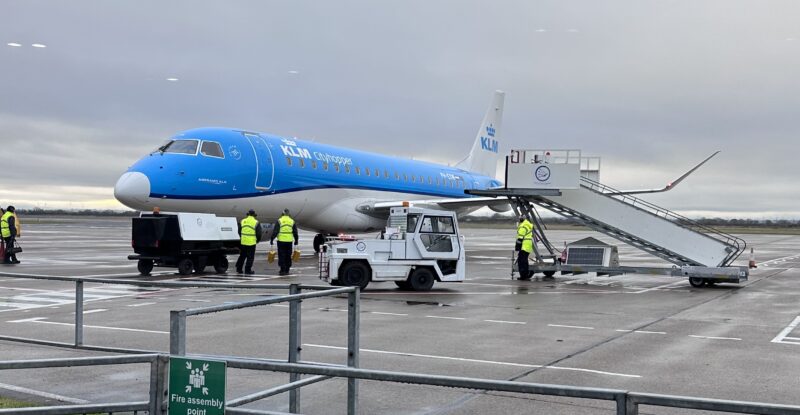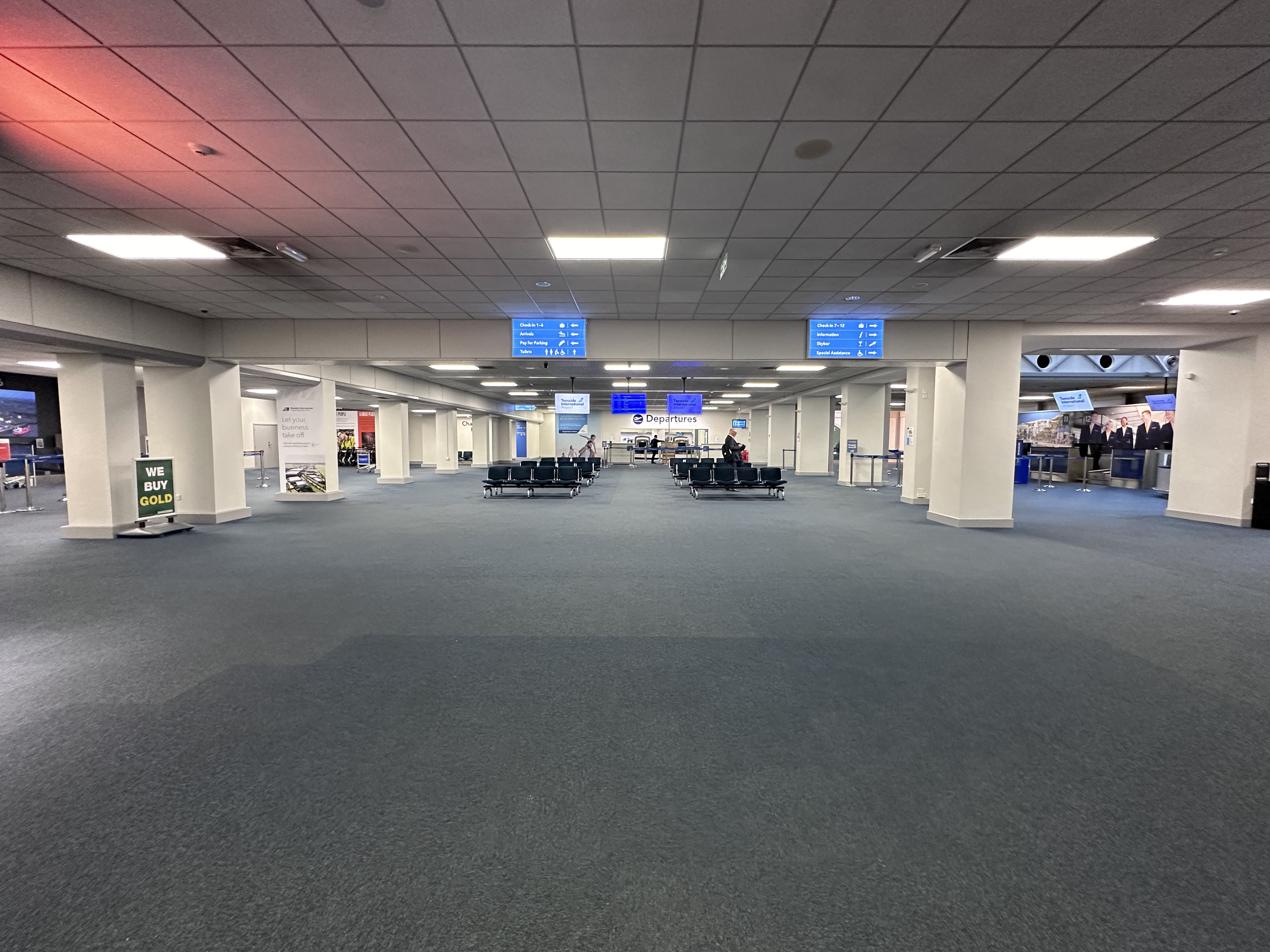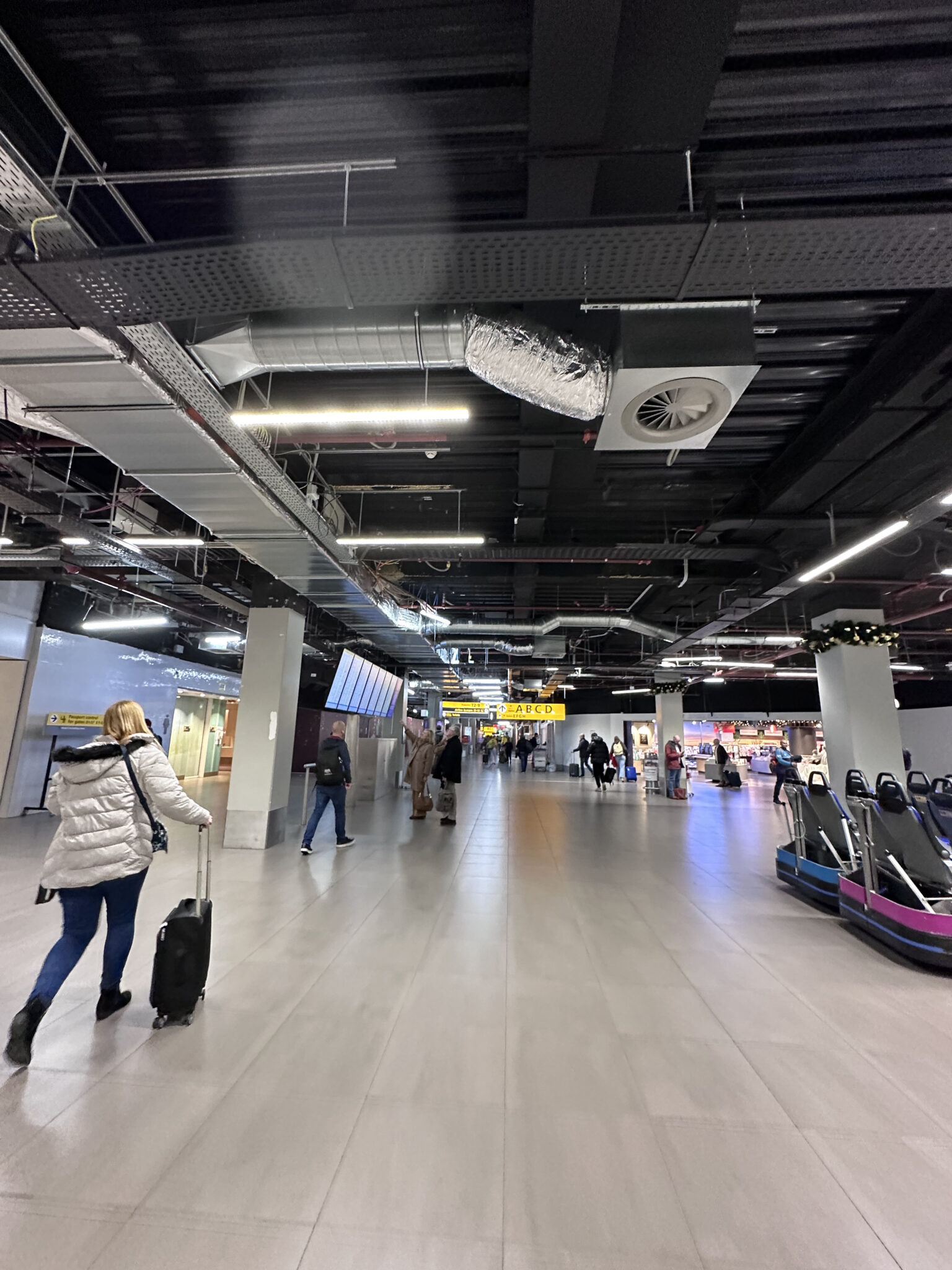 KLM’s established route strategy connecting passengers over Amsterdam Schiphol from smaller UK airports that are either underserved or not served at all by UK airlines is a smart — and lucrative — one. Passengers based near or travelling to regional centres like Inverness, Humberside, Norwich or Teesside far prefer travelling to or from KLM’s European and global destinations over Amsterdam, and it’s clear from the pricing the airline commands that they will pay up for the convenience.
KLM’s established route strategy connecting passengers over Amsterdam Schiphol from smaller UK airports that are either underserved or not served at all by UK airlines is a smart — and lucrative — one. Passengers based near or travelling to regional centres like Inverness, Humberside, Norwich or Teesside far prefer travelling to or from KLM’s European and global destinations over Amsterdam, and it’s clear from the pricing the airline commands that they will pay up for the convenience.
Focussing on these small airports is a logical choice, and creates a strong passenger experience via network design.
For example, flying KLM out of tiny Teesside International (formerly Tees-Side and Durham Tees Valley) is an absolute dream, largely because of its size: just 250 feet (about 70m) from bag drop through security to the gate area with its spacious seating. That’s by comparison to the other airport that people in the catchment use, Newcastle, which isn’t itself large, yet features relatively long walks, duty-free labyrinth diversions, and is in serious need of refurbishment.
The small Embraer E170s and E190s used by KLM on the Teesside International-Amsterdam route are a key #PaxEx detail that nonetheless have some tradeoffs.
Strong design on board makes the relatively elderly Embraer cabin design feel fresh. The pop of KLM blue on the front bulkhead and the tulips covering the service carts in the otherwise industrial cabin are noticeable touches to boost the mood.

The KLM bulkhead is cheery and the tulip effects on the carts — different in each case! — are a welcome pop of colour. Image: John Walton
These aircraft are above average in economy thanks to the seat width and lack of middle seat, and the front section where Eurobusiness sits has decent legroom. KLM’s decision to not block off neighbour seating in business class makes a serious dent in the overall experience, however, both in terms of seating comfort and in terms of onboard luggage space — a critical element to the business class experience.
Business travellers will often be travelling with a rollaboard and a larger personal item like a laptop bag or tote, and with a full business cabin the bins on board are simply not sufficient. The bins are also themselves too small for a normal European sized carryon, and not having the ability to push these bags underneath a neighbourless seat is a drawback.

The scars of many a hard-sided case that has had to be scraped into the E-Jet’s tiny bins highlight the carryon issue with not blocking the neighbouring seat. Image: John Walton
The Eurobusiness food and beverage offering is also strong for a short flight. The bar cart is stocked with decent brands (although, alas, no Champagne — could airline group partner Air France not perhaps secure them a deal?) and the glassware is attractive.
For the meal service, the breakfast was excellent with its moreish French toast, hearty helping of yoghurt, pastry, fruit and bread options. KLM leans hard into the blue-and-white Delftware pottery theme, with the pattern extending from the cardboard box containing the business meal to the menu, paper napkin seal and the plastic lids. A boxed chilled meal might otherwise feel a little underwhelming, but the whimsy was strong.
It was, however, surprising to see quite so much single-use plastic these days. Many airlines — and many inflight product suppliers — are doing wonders with attractive reusable and compostable service products.
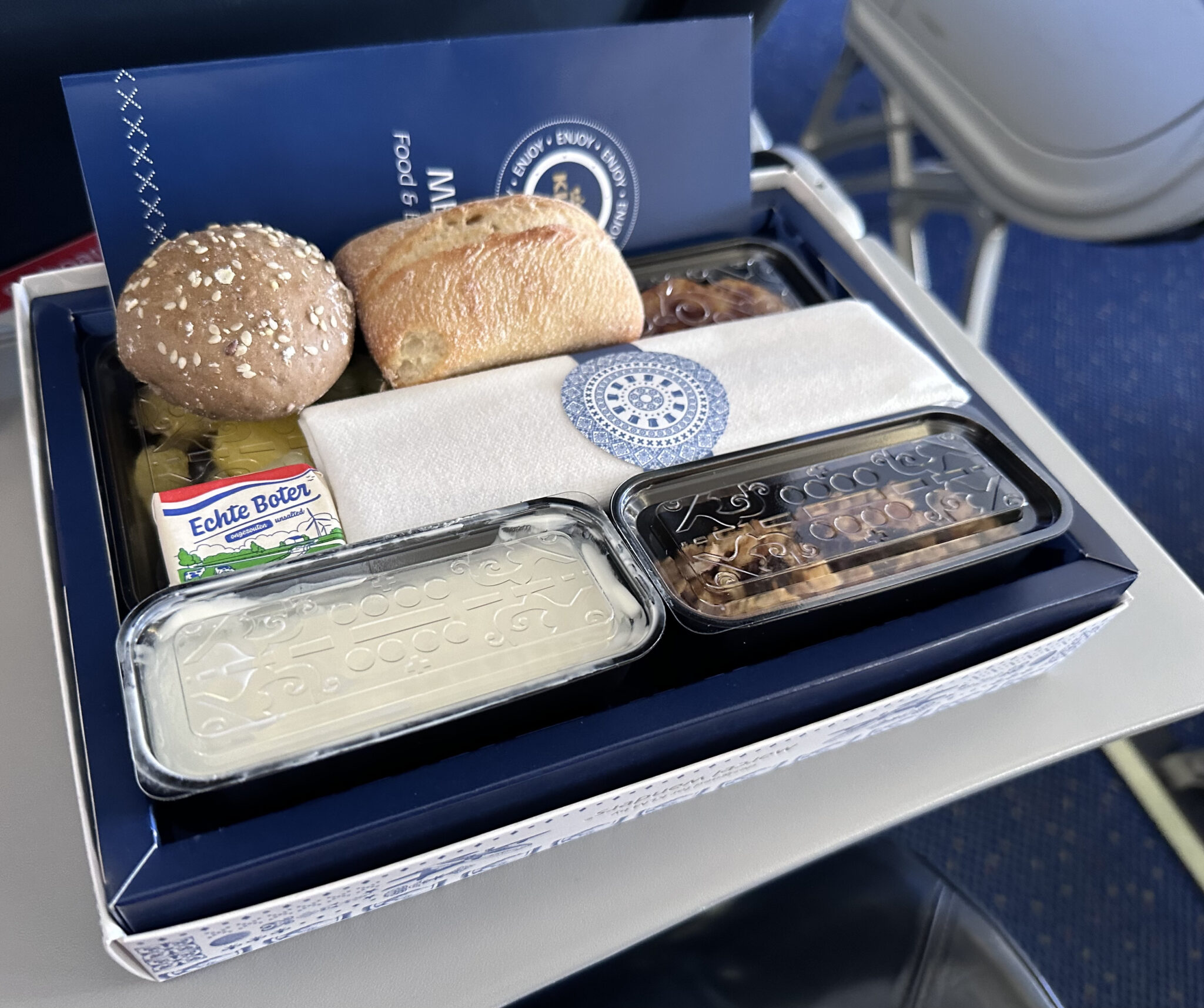
The charm and whimsy of the KLM onboard box really stands out, despite the extensive single-use plastic. Image: John Walton
KLM needs to turn some attention to the details it can fix in Amsterdam
Amsterdam, however, is a snag in the works. Its runway layout means that flights like this often end up relegated to landing on the Polderbaan, the “new” runway that is some 20 minutes’ taxi away from the terminal. For a flight that’s just over 50 minutes long, and where KLM offers really short connections, that’s a substantial addition of time.
Also adding time: a sloppily operated bus-gate experience from a disused old terminal stand area that makes a Soviet-era housing block look fresh and modern.
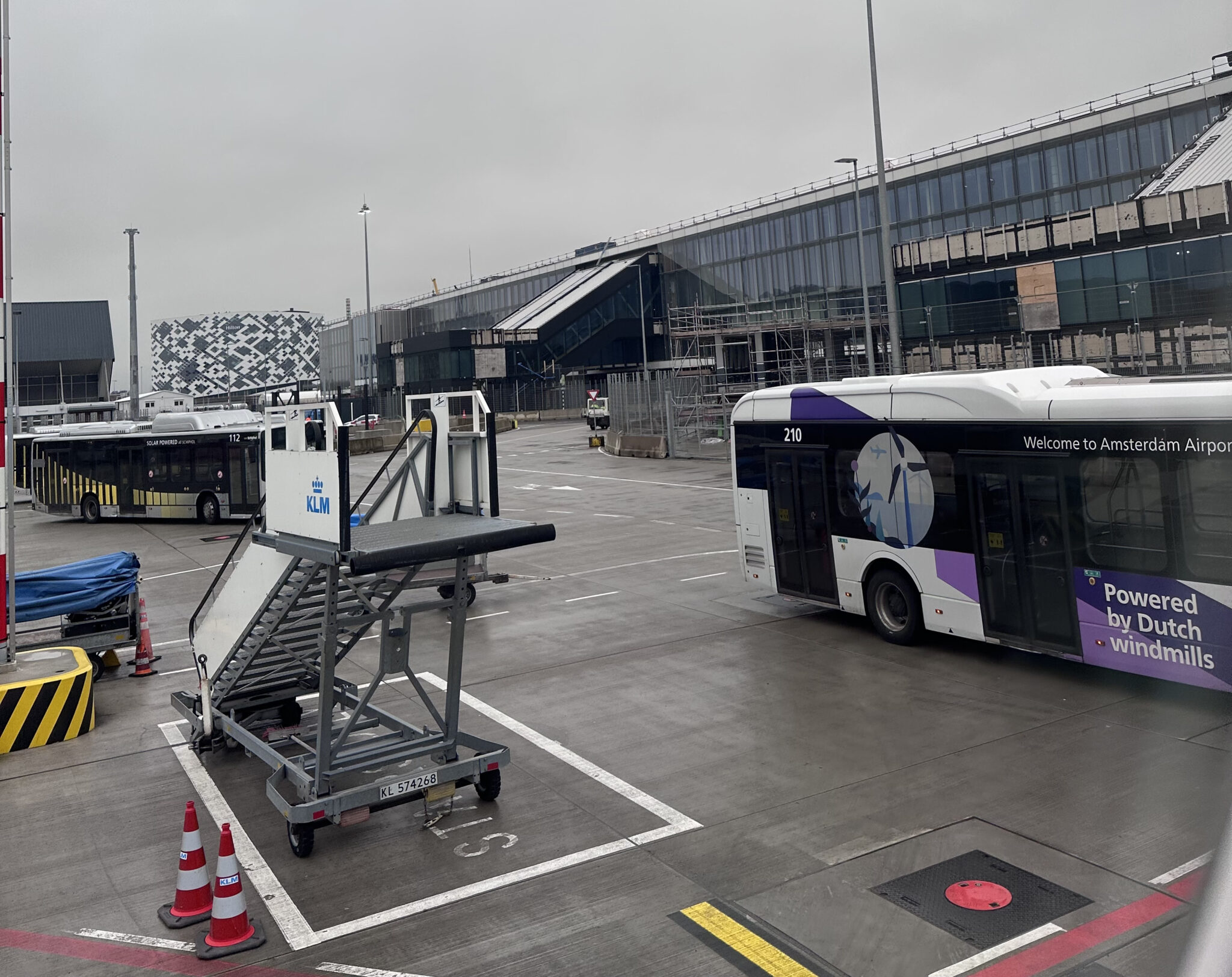
Getting bus-gated from this construction/demolition site wasn’t the best experience. Image: John Walton
Amsterdam’s terminal itself also needs a lot of cheering up. Some of it is under renovation, but even the bits that don’t look under construction don’t feel finished. The single terminal with its multiple spoke pier design means a lot of time spent walking between flights. Passport processing into and out of Schengen was also really slow.
KLM’s Crown Lounges are odd beasts, which is perhaps a story for another time. The Schengen lounge is after all under renovation, and so busy when your author visited that there was no seating available — which, combined with a lack of increased focus on keeping it clean and tidy, made for an experience less pleasant than just heading to the gate.
Not all of these issues are solely within KLM’s powers to resolve, not least because of the ongoing uncertainty about eventual sizing of the airport, but some of it can be mitigated by the airline.
All in all, though, it’s clear that there’s a lot of demand for KLM’s flights to these underserved airports, and much of the experience is truly pleasant, even whimsically charming. If only as much design focus was applied to the Amsterdam experience as to the onboard product, it would have a world-beating product here.
Related Articles:
- Room for improvement in KLM economy class aboard the 787-10
- Brand new interiors delight on Air France 777 and A220 twinjets
- KLM finally goes premium economy with new lightweight Collins MiQ
- Passengers not left wanting aboard Air France 777-300ER
Featured image credited to John Walton


